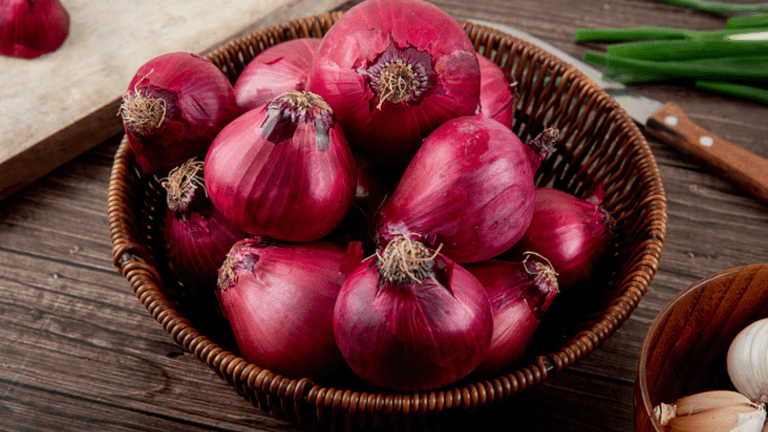
Onion prices are anticipated to stay elevated for a minimum of one month owing to limited supplies, with exports projected to remain strong due to the elimination of the 40% export duty, which has increased the profitability of overseas shipments amid robust global demand.
On Saturday, the central government eliminated the export duty and simultaneously implemented a minimum export price (MEP) in order to discourage the export of onions.
On October 28, the Ministry of Commerce and Industry issued a notification, setting a minimum export price (MEP) of $800 per tonne on onion exports until December 31. Simultaneously, on the same day, the Ministry of Finance issued a notification declaring that the customs duty on onion exports was reduced to ‘nil’ in the interest of the public. The export duty, initially imposed on August 19, was in effect until December 31.
Read More: Govt sets $800 per metric tonne minimum export price for onions to secure domestic supply stability
Reports of exporters engaging in under-invoicing to evade export duties had sustained strong export activity. In response to this situation, the government introduced the Minimum Export Price (MEP), a measure that had been advocated for by a portion of the trading community.
Nevertheless, at present, the very group of traders has approached the government to highlight the adverse effects of lifting the export duty on the domestic onion market.
The Centre introduced a minimum export price (MEP) of $800 per tonne on onion exports on October 28. This decision was made in response to a rapid 60% increase in wholesale prices over a two-week period. The primary goal behind implementing the MEP was to limit onion exports, which had remained robust despite the government’s imposition of a 40% export duty in August. According to various trade sources, the duty failed to discourage onion exports because many traders resorted to under-invoicing to reduce the duty paid. For example, shipments to Bangladesh were recorded at $200 per tonne despite prevailing market prices being over $750 per tonne.
Certain exporters, contending with unfair competition from deceitful traders engaged in under-invoicing, continuously urged the government to implement the MEP.
On October 28, the government yielded to the pressure and introduced an MEP of $800 per tonne. Paradoxically, it appears that even this MEP is unlikely to serve as an effective export deterrent. Why? Because the government rendered onion exports duty-free by revoking the 40% export duty imposed just two months ago.
“Now the exports can continue freely. As one does not have to pay a duty, traders would not have any problem in showing a higher price,” said a trader, who requested not to be identified. And if domestic prices remain lower than INR 65/kg, then the unscrupulous’ exporters can resort to over-invoicing.
Onion exports are expected to maintain stability or experience a slight decrease in the short term over the next 2-3 weeks. This is due to the diminishing supply of high-quality onions from existing stocks and an increased availability of onions from Afghanistan and Pakistan in the international market, which will limit export volumes for the upcoming 2-3 weeks.
Nonetheless, a significant surge in exports is anticipated as new onions from the Kharif harvest become available in the markets following Diwali. Without the presence of export duties, there won’t be any policy hindrance to export activities.
Despite a 5% to 6% reversal in wholesale prices following the introduction of the MEP, market participants do not anticipate a significant price decrease. Since several wholesale markets in Maharashtra, particularly those in the Nashik district, will be closed for Diwali, a slight price increase is expected after markets reopen following the holiday. The subsequent direction of domestic prices will be contingent on the arrival of the new crop and the volume of exports in November and December.